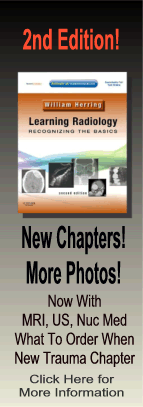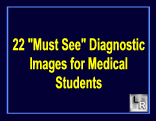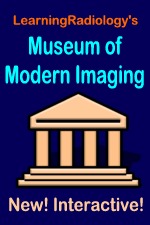| Cardiac | |
|---|---|
| GI | |
| Bone | |
| GU | |
| Neuro | |
| Peds | |
| Faculty | |
| Student | |
| Quizzes | |
| Image DDX | |
| Museum | |
| Mobile | |
| |
Misc |
| Videocasts | |
| Signs | |
Learning
Radiology:
Recognizing
the Basics
Available
on the Kindle
and IPad
LearningRadiology Imaging Signs
on Twitter
![]()
Follow us on
What is the most likely diagnosis?
- 73 year-old male with heartburn
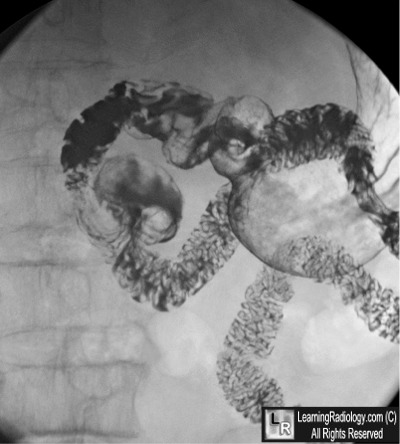
Double Contrast Upper GI Examination of the Duodenum
- Giant Duodenal Ulcer
- Crohn Disease
- Dudeoneal Diverticulum
- Paraduodenal Hernia
- Lymphoma
Additional Images - None
![]()
Additional Images
None
![]()
Answer:
3. Duodenal Diverticulum
More (Click Discussion Tab)
Duodenal Diverticulum
General Considerations
- Relatively common (up to 6% of upper GI examinations) in adults
- Usually arise in 2nd portion of the duodenum (85%) within 1-2 cm of the ampulla of Vater
- Like almost all GI diverticula, they are false diverticula with herniation of the mucosa and submucosa through the muscular layer
MORE . . .
.
This Week
73 year-old male with heartburn |
Presented as a series of cards, this podcast asks some of the most common causes of neuroimaging findings and diseases making it ideal for a quick review. Can be used as either an audio only or audio/video podcast.; Complements Video Flashcard Podcasts 15, 21,25, 38, 42, 46 and 47. |
Some of the fundamentals of interpreting chest images |
The top diagnostic imaging diagnoses that all medical students should recognize according to the Alliance of Medical Student Educators in Radiology |
Recognizing normal and key abnormal intestinal gas patterns, free air and abdominal calcifications |
Recognizing the parameters that define a good chest x-ray; avoiding common pitfalls |
How to recognize the most common arthritides |
LearningRadiology
Named Magazine's
"25 Most Influential"
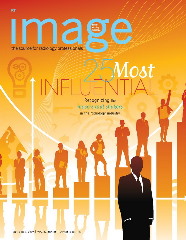
See Article on LearningRadiology
in August, 2010
RSNA News
| LearningRadiology.com |
is an award-winning educational website aimed primarily at medical students and radiology residents-in-training, containing lectures, handouts, images, Cases of the Week, archives of cases, quizzes, flashcards of differential diagnoses and “most commons” lists, primarily in the areas of chest, GI, GU cardiac, bone and neuroradiology. |

